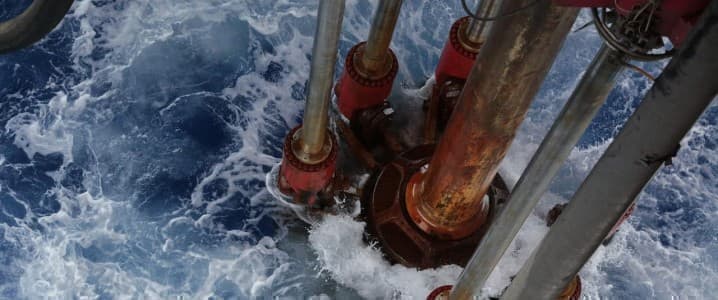In a year marked by huge spending cuts across the oil and gas industry amid urgently revised budgets and slashed investments, some analysts are now expecting a light at the end of this tunnel, at least offshore. From next year, Rystad Energy expects offshore oil and gas investments to rebound, but there will be a tectonic shift, with nearly half of that investment going to floating production and storage. Earlier this month, Rystad reported that Chinese shipyards are preparing for an increase in new orders for floating production, storage, and offloading vessels beginning next year. This increase would mean that offshore oil and gas exploration and production were on the rebound. In fact, Rystad’s analysts said that over the next five years, 40 percent of newbuilds for the energy industry would be FPSOs. They stopped short of forecasting what the total of new facilities would be and how it compares with previous years.
Banks, meanwhile, diverge on their oil price forecasts, as they often do. Goldman Sachs, for example, said it expected Brent to rebound to $65 a barrel next year while Morgan Stanley said the benchmark would struggle to break the $50 threshold. Goldman motivated its forecast with the expectation that coronavirus vaccines would become available by spring 2021. Morgan Stanley, on the other hand, pointed to the surge in U.S. oil and gas production from the past few years as one reason for its relatively bearish forecast. The other reason was more important: a shift in investor priorities.
Environmentally responsible investing is drawing more and more attention. Banks are following the tide and making their own agenda, which involves motivating their clients to reduce their own carbon footprint and also seeking to make their own operations more environmentally sound. This, most of the time, means less investment in oil and gas. And less investment—and lending—to oil and gas would mean a slower rebound for the industry. Related: Is This Europe’s Newest Oil & Gas Hotspot?
In offshore oil, specifically, the Houston Chronicle’s Paul Takahashi recently wrote how companies were being stifled by two oil price crises in five years and now, on top of those, the coronavirus, which was wreaking chaos on oil demand. Deepwater drilling was particularly threatened by the current environment, and investors’ growing appetite for renewable energy exposure was not helping, either.
“I wouldn’t be surprised if companies are going away from deep water because of the long-term risks and the absolute cost of projects,” Takahashi quoted Tom Kellock, head of offshore rig market consulting for IHS Markit, as saying. “As the environment becomes more uncertain, we could see a trend to more shallow water.”
Earlier this year, there was some optimism that the lifting of national lockdowns would stimulate oil demand, prices, and basically drive a return to normal. Four months later, nobody believes in a quick recovery anymore. Even Saudi Arabia—OPEC’s de facto leader and biggest producer—the country that is almost always bullish about oil whatever the actual fundamentals, has now taken a warier stance. The latest budget plan of the Kingdom, according to Goldman calculations, was based on a Brent price of $50 a barrel. Although quite higher than current prices, it is also a lot lower than what the rulers in Riyadh would have liked to see as the basis for their budget plans.
Even Rystad, in its otherwise bullish forecast about offshore spending, notes that “While higher, budgets will be quite cost-wary.” This wariness will likely limit any potential improvement in spending on oil and gas that might result from the continued curbs on production among OPEC+ members, provided they do keep the curbs at the current rate of 7.7 million bpd of their combined output.
The situation with demand is bad enough to warrant it. There have already been reports that Saudi Arabia is considering an extension of the current rate of cuts despite the fact the original plan calls for easing another 2 million bpd from January. Commodity traders seem to share the belief that there is still too much oil around. While some of them were optimistic just a couple of months ago, now none of the commodity trading majors expect a material improvement in oil prices over the next six to nine months. They expect it to continue hovering around $40 a barrel, at least until June 2021.
And it gets worse. The very same commodity traders are pouring billions into renewable energy projects. The Financial Times reported in late September that Mercuria, Gunvor, Vitol, and Trafigura are in a rush to expand their presence in alternative energy sources.
“Over the next five years we should have about 50 per cent of our investments into renewables,” Mercuria’s CEO Marco Dunand told the FT Commodities Global Summit.
If commodity traders are jumping on the renewable bandwagon alongside European Big Oil, the future of the oil industry may be even more problematic than it appears right now, even if offshore spending rebounds next year.
By Irina Slav for Oilprice.com
More Top Reads From Oilprice.com:
- ISIS Calls For Attacks On Saudi Oil Industry
- IMF Sees Oil Prices At $40-50 Next Year
- Oil Majors Stuck Between A Rock And A Hard Place


















